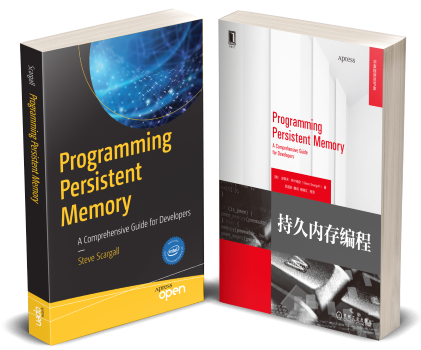
What is Persistent Memory?
The term persistent memory is used to describe technologies which allow programs to access data as memory, directly byte- addressable, while the contents are non- volatile, preserved across power cycles. It has aspects that are like memory, and aspects that are like storage, but it doesn’t typically replace either memory or storage. Instead, persistent memory is a third tier, used in conjunction with memory and storage. Systems containing persistent memory can outperform legacy configurations, providing faster start-up times, faster access to large in-memory datasets, and often improved total cost of ownership.

Persistent Memory Development Kit
The Persistent Memory Development Kit (PMDK) is a suite of open-source libraries that have been developed for various use cases. Each library is tuned, validated to production quality, and thoroughly documented. These libraries provide stable APIs so developers can rapidly implement PMem features into applications without worrying about the hardware implementation details or generational changes.
Master Persistent Memory Programming
Whether you’re beginning your learning journey about persistent memory or you want to dive deeper into the programming details, Programming Persistent Memory is a great resource that with information for everyone. The book is available in English, Simplified Chinese, and Korean languages.
Get your FREE eBook
Join the PMem.io Community
Join the PMem Community and collaborate with peers and product experts to learn, contribute, and solve your toughest business challenges.
Join NowNews and Announcements
Read articles from product experts.
Events
Join PMem experts and ISVs at upcoming events or watch replays of past events.

Persistent Memory + Computational Storage Summit 2022
Start date: 25 May 2022 00:00 UTC
2021 SPDK,PMDK, & Performance Virtual Forum
Start date: 22 Jun 2021 00:00 UTC


